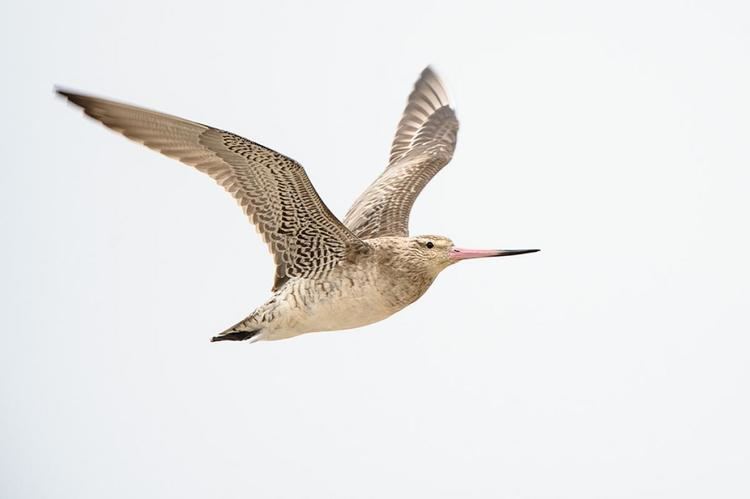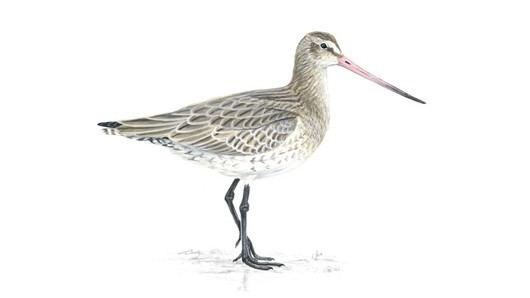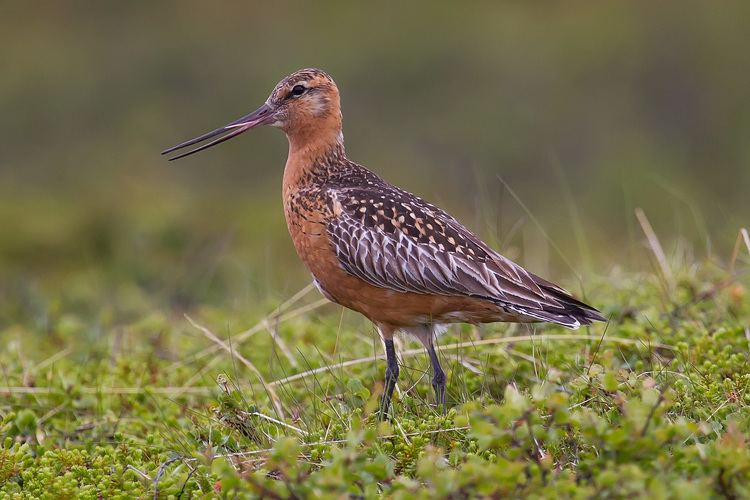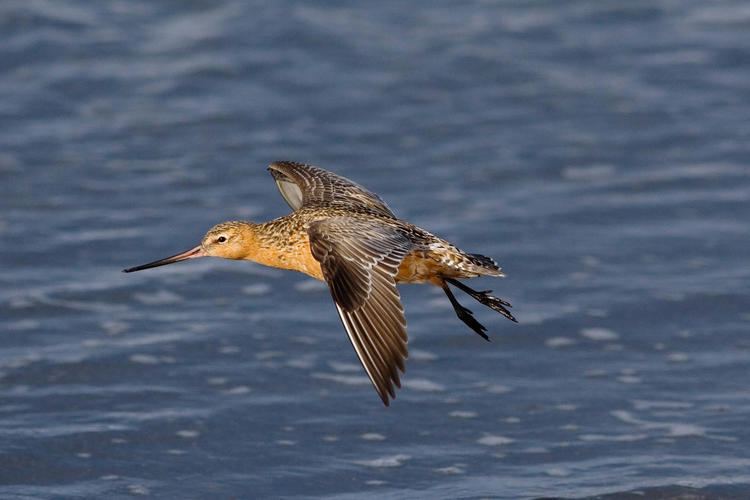Genus Limosa Higher classification Godwit | Phylum Chordata Family Scolopacidae Scientific name Limosa lapponica Rank Species | |
 | ||
Similar Godwit, Bird, Black‑tailed godwit, Dunlin, Common greenshank | ||
Bar tailed godwits prepare for migration at miranda new zealand
The bar-tailed godwit (Limosa lapponica) is a large wader in the family Scolopacidae. The genus name Limosa is from Latin and means "muddy", from limus, "mud". The specific lapponica refers to Lapland. The English term "godwit" was first recorded in about 1416–7 and is believed to imitate the bird's call.
Contents
- Bar tailed godwits prepare for migration at miranda new zealand
- Was it designed the bar tailed godwits navigational system
- Description
- Diet
- Breeding
- Migrations
- Protection
- References

The bar-tailed godwit breeds on Arctic coasts and tundra mainly in the Old World, and winters on coasts in temperate and tropical regions of the Old World and of Australia and New Zealand. Its migration is the longest known non-stop flight of any bird and also the longest journey without pausing to feed by any animal.

Was it designed the bar tailed godwits navigational system
Description

The bar-tailed godwit is a relatively short-legged species of godwit. The bill-to-tail length is 37–41 cm (15–16 in), with a wingspan of 70–80 cm (28–31 in). Males average smaller than females but with much overlap; males weigh 190–400 g (6.7–14.1 oz), while females weigh 260–630 g (9.2–22.2 oz); there is also some regional variation in size (see subspecies, below). The adult has blue-grey legs and a slightly upturned bi-colored bill, pink at the base and black towards the tip. The neck, breast and belly are unbroken brick red in breeding plumage, off white in winter. The back is mottled grey.

It is distinguished from the black-tailed godwit (Limosa limosa) by its barred, rather than wholly black, tail and a lack of white wing bars. The most similar species is the Asiatic dowitcher.
There are three subspecies, listed from west to east:

Diet

It forages by probing in mudflats or marshes. It may find insects by sight in short vegetation. It eats mainly insects and crustaceans, but also parts of aquatic plants.
Breeding
The bar-tailed godwit is a non-breeding migrant in Australia. Breeding take place each year in Scandinavia, northern Asia, and Alaska. The nest is a shallow cup in moss sometimes lined with vegetation. Both sexes share incubation of the eggs and care for the young.
Migrations
The bar-tailed godwit migrates in flocks to coastal East Asia, Alaska, Australia, Africa, northwestern Europe and New Zealand, where the sub-species Limosa lapponica baueri is called 'Kūaka' in Māori.
It was shown in 2007 to undertake the longest non-stop flight of any bird. Birds in New Zealand were tagged and tracked by satellite to the Yellow Sea in China. According to Dr. Clive Minton (Australasian Wader Studies Group): "The distance between these two locations is 9,575 km (5,950 mi), but the actual track flown by the bird was 11,026 km (6,851 mi). This was the longest known non-stop flight of any bird. The flight took approximately nine days. At least three other bar-tailed godwits also appear to have reached the Yellow Sea after non-stop flights from New Zealand."
One specific female of the flock, nicknamed "E7", flew onward from China to Alaska and stayed there for the breeding season. Then on 29 August 2007 she departed on a non-stop flight from the Avinof Peninsula in western Alaska to the Piako River near Thames, New Zealand, setting a new known flight record of 11,680 km (7,258 mi).
Protection
The bar-tailed godwit is one of the species to which the Agreement on the Conservation of African-Eurasian Migratory Waterbirds (AEWA) applies.
